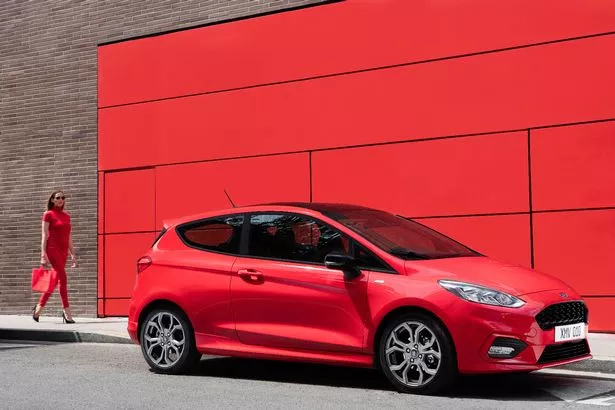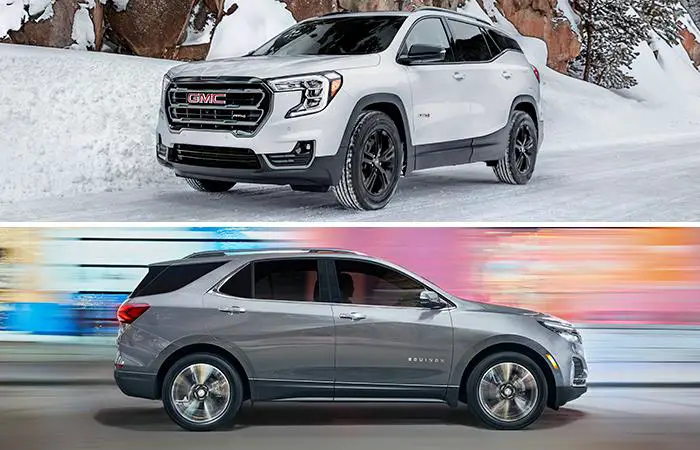If you’re a fan of the Ford Fiesta, you might be wondering why the car is being discontinued.
The Fiesta has been a popular car for decades, but it seems that its time has come to an end.
In this article, we’ll explore the reasons behind the discontinuation of the Ford Fiesta and what it means for the future of Ford.
We’ll also provide you with first-hand information on the matter.
So, buckle up, and let’s dive into the world of Ford Fiesta!
What are some reasons for discontinuing the Ford Fiesta?
The Ford Fiesta has declined since the middle of the last decade, with sales dropping significantly. The reasons for this decline pre-date COVID-19 or semiconductor shortages, but they have led directly to the discontinuation of the Fiesta.
The Society of Motor Manufacturers and Traders (SMMT) data shows that Fiesta sales peaked in 2015, with more than 133,000 new Fiestas registered. However, over the next five years, that margin of superiority was dramatically eroded.
In 2020, the Fiesta’s registrations had fallen to just over 49,000 cars, which was less than 3,000 ahead of the Vauxhall Corsa. The global shortage of semiconductor chips that has struck the entire car industry (as well as many other industries) in 2021 is also a contributing factor to the discontinuation of the Fiesta.
Modern cars are chock full of chips, and Ford spokesman John Gardiner told The Car Expert that sparse stocks of the essential electronics had to be used wisely.
What is replacing the Ford Fiesta?
According to a report by Carscoops, the Ford Fiesta will be indirectly replaced by an electric variant of the Puma SUV. The last Ford Fiesta rolled out of the production line in June 2023, six years after the debut of the current generation and less than two years after the recent facelift. The Puma crossover has effectively replaced the Fiesta in the Blue Oval’s line-up and has itself found success: it was the brand’s best-seller in the UK in 2021, and the nation’s fourth best-seller in 2022.
Also Read: Why is The Ford Fiesta Being Discontinued: Get First-Hand Information!
Are Ford Fiestas good cars?
According to Edmunds, the Ford Fiesta is one of the best subcompact cars on the market. The Fiesta has been praised for its sporty handling in turns, well-appointed interior with advanced technology options, and zesty performance in the ST model. However, the Fiesta has limited cargo and rear-seat space, and some rivals offer better ride quality and seat comfort.
How long do Ford Fiestas last?
According to Motor & Wheels, a Ford Fiesta can last up to 200,000 miles with proper maintenance and conscientious use. At this stage, they rarely require repairs. However, most people rarely use the car past 150,000 miles before changing it. The lifespan of a Ford Fiesta can vary depending on several factors, such as the way it is driven, the frequency of maintenance, and the quality of parts used for repairs.
What cars compare to Ford Fiesta?

Several cars can be compared to the Ford Fiesta. Here are some of the most popular alternatives:
- Volkswagen Polo: The Polo is a subcompact car that is similar in size to the Fiesta. It has a spacious interior, a comfortable ride, and a range of efficient engines.
- Peugeot 208: The 208 is a stylish and modern subcompact car that is fun to drive. It has a range of efficient engines and a comfortable interior.
- SEAT Ibiza: The Ibiza is a practical and reliable subcompact car that is similar in size to the Fiesta. It has a spacious interior, a comfortable ride, and a range of efficient engines.
- Vauxhall Corsa: The Corsa is a popular subcompact car that is similar in size to the Fiesta. It has a spacious interior, a comfortable ride, and a range of efficient engines.
- Hyundai i20: The i20 is a practical and reliable subcompact car that is similar in size to the Fiesta. It has a spacious interior, a comfortable ride, and a range of efficient engines.
- Renault Clio: The Clio is a stylish and modern subcompact car that is fun. It has a range of efficient engines and a comfortable interior.
Which Fiesta engine is best?
According to Auto Express, the 1.0-litre EcoBoost three-cylinder petrol engine is the best in the Ford Fiesta range. It’s a popular choice because it’s punchy, economical, and fun to use. The engine has been around for a while, but it remains a top choice for many drivers.
Is the Ford Puma bigger than a Fiesta?
Yes, the Ford Puma is bigger than the Ford Fiesta. According to Size, the Ford Puma is 14.6 cm longer, 7 cm wider, and 6.1 cm taller than the Ford Fiesta. The Puma has a wheelbase of 258.8 cm, which is 9.5 cm longer than the Fiesta’s wheelbase. However, the Fiesta has 11% more cargo space than the Puma.
How much is the Ford Fiesta 2023?
According to CarsGuide, the 2023 Ford Fiesta range of configurations is currently priced at $30,250. The price range varies depending on the trim level and other factors. For instance, the basic trim level Hatchback Fiesta ST is priced at $30,250, while the top-of-the-range Hatchback Fiesta ST is priced at $36,410.
What Are The Ford Fiesta Types?
The Ford Fiesta is a supermini car that was marketed by Ford from 1976 to 2023 over seven generations. The Fiesta has been developed and manufactured by Ford’s European operations and has been positioned below the Escort (later the Focus).
The Fiesta has been manufactured in the United Kingdom, Germany, Spain, Brazil, Argentina, Venezuela, Mexico, Taiwan, China, India, Thailand, and South Africa.
The Fiesta has been available in various body styles, including 3- and 5-door hatchback, 4-door sedan/saloon (some countries, Mk4-Mk6 only), and 3-door van (Europe only). The Fiesta has also been offered in different models such as Active, Vignale, Trend, Titanium, and ST-Line.
Ford Fiesta Models by Year
Ford has marketed the Ford Fiesta from 1976 to 2023 over seven generations. Here are the different models of the Ford Fiesta by year:
- First Generation (1976-1983): The first generation of the Ford Fiesta was introduced in 1976. It was available in 3- and 5-door hatchback, 4-door sedan/saloon (some countries, Mk4-Mk6 only), and 3-door van (Europe only) body styles.
- Second Generation (1983-1989): The second generation of the Ford Fiesta was introduced in 1983. It was available in 3- and 5-door hatchback body styles.
- Third Generation (1989-1995): The third generation of the Ford Fiesta was introduced in 1989. It was available in 3- and 5-door hatchback body styles.
- Fourth Generation (1995-2002): The fourth generation of the Ford Fiesta was introduced in 1995. It was available in 3- and 5-door hatchback body styles.
- Fifth Generation (2002-2008): The fifth generation of the Ford Fiesta was introduced in 2002. It was available in 3- and 5-door hatchback body styles.
- Sixth Generation (2008-2017): The sixth generation of the Ford Fiesta was introduced in 2008. It was available in 3- and 5-door hatchback body styles.
- Seventh Generation (2017-2023): The seventh generation of the Ford Fiesta was introduced in 2017. It was available in 3- and 5-door hatchback body styles.
FAQs
Why is The Ford Fiesta Being Discontinued?
The Ford Fiesta has declined since the middle of the last decade, with sales dropping significantly. The reasons for this decline pre-date COVID-19 or semiconductor shortages, but they have led directly to the discontinuation of the Fiesta. The global shortage of semiconductor chips that has struck the entire car industry (as well as many other industries) in 2021 is also a contributing factor to the discontinuation of the Fiesta.
What is replacing the Ford Fiesta?
The Ford Fiesta will be indirectly replaced by an electric variant of the Puma SUV.
Are Ford Fiestas good cars?
According to Edmunds, the Ford Fiesta is one of the best subcompact cars on the market.
How long do Ford Fiestas last?
According to Motor & Wheels, a Ford Fiesta can last up to 200,000 miles with proper maintenance and conscientious use.
What are some reasons for discontinuing the Ford Fiesta?
The reasons for discontinuing the Ford Fiesta include a decline in sales, pre-dating COVID-19 or semiconductor shortages, and the global shortage of semiconductor chips that struck the entire car industry in 2021.
What cars compare to the Ford Fiesta?
Some popular alternatives to the Ford Fiesta include the Volkswagen Polo, Peugeot 208, SEAT Ibiza, Vauxhall Corsa, Hyundai i20, and Renault Clio.
Which Fiesta engine is best?
According to Auto Express, the 1.0-litre EcoBoost three-cylinder petrol engine is the best in the Ford Fiesta range.
Is the Ford Puma bigger than a Fiesta?
Yes, the Ford Puma is bigger than the Ford Fiesta
How much is the Ford Fiesta 2023?
According to CarsGuide, the 2023 Ford Fiesta range of configurations is currently priced at $30,250.
What are the different models of the Ford Fiesta by year?
Ford has marketed the Ford Fiesta from 1976 to 2023 over seven generations. The Fiesta has been available in various body styles, including 3- and 5-door hatchback, 4-door sedan/saloon (some countries, Mk4-Mk6 only), and 3-door van (Europe only). The Fiesta has also been offered in different models such as Active, Vignale, Trend, Titanium, and ST-Line.
Conclusion
The Ford Fiesta has been a popular car for decades, but it seems that its time has come to an end.
The reasons for the discontinuation of the Ford Fiesta include a decline in sales, pre-dating COVID-19 or semiconductor shortages, and the global shortage of semiconductor chips that struck the entire car industry in 2021.
The Fiesta has been replaced by an electric variant of the Puma SUV.
Although the Ford Fiesta will no longer be produced, it will always be remembered as a reliable and efficient car that served its purpose well.
It’s the end of an era, but the future is bright for Ford as they continue to innovate and electrify their entire model range of passenger cars and light commercial vehicles.
Thank you for reading!




